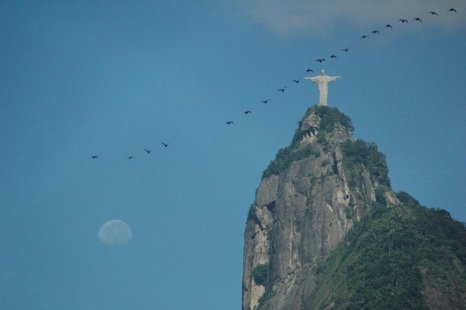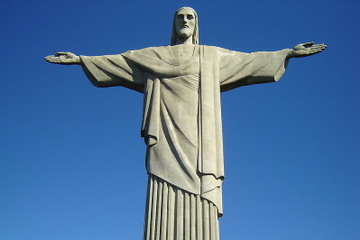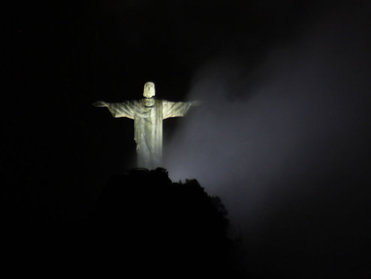
There could be no other symbol of Brazilian Christianity as magnificent as the Statue of Christ the Redeemer. The largest art deco statue in the world, it is considered as an icon of Rio de Janeiro and Brazil. The statue chosen meant that Christ loves all and will embrace everyone who comes to him and is the 5th largest statue of Jesus. The construction of the statue underwent several negotiations and petitions for it to become a reality. The idea of building it was since 1850 but it had to face lot of criticism and opposition until 1920. Today, it is considered as the New Seven Wonders of the World by UNESCO World Heritage Site on 7 July 2007.
A statue of Jesus Christ, Christ the Redeemer, is considered the largest art deco statue in the world. Located in Brazil, it lies between the geographic coordinates 22°57’ S latitude and 43°12’ W longitude. The statue stands at the peak of the 2,300 feet Corcovado mountain which is in the Tijuca Forest National Park.

The statue is about 98 feet tall, located on a 2,300 feet Corcovado mountain. It weighs about 635 tonnes and the distance between its stretched arms are about 28 metres. The height of the statue does not include the foot pedestal which measures about 26 feet.

The idea to construct such a statue was laid by a Vincentian priest Pedro Maria Boss in the 1850s to honour Princess Isabel, the daughter of the Emperor Pedro II. However, the princess did not approve the project. Later in 1921, the Roman Catholic archdiose of Rio de Janeiro proposed a summit on the statue to be built at an elevation of 2,310 feet was approved because of its commanding height. Hence, citizens petitioned President Epitacio Pessoa to allow the construction on Mount Corcovado. After several petitions, the foundation stone of the statue was laid on 4 April 1922, the day of Brazil’s Independence from the Portugal. Brazilian artist, Carlos Oswald had been credited with the standing pose of the statue. The primary designer of the statue was a French sculptor, Paul Landowski. The statue was dedicated after its completion on 12 October 1931.

The unique features of the Statue of Christ the Redeemer are as follows:
-
The height of the statue was about 38 metres and hence the construction was from the head down. In total, more than thousand tonnes of concrete was used to build the statue.
-
The head builder of the statue, who was Jewish, converted himself to Catholicism after the completion of the statue.
-
It is because of the sun, rain and storms that the statue has no eyebrows, lips or fingers.
-
During the night the statue is flooded by lights and this makes the statue look like it is magically flying in the air.
-
The Statue can be accessed through the railway line of 3.8km and can bring 360 passengers to the Statue.
-
The money to build Christ the Redeemer came from Brazil’s Catholic Community.
-
The statue was constructed in France because at that time it was thought that the workers would not be capable of building a grand masterpiece such as this. Piece by piece it was transported to Rio de Janeiro; the head itself is made up of 50 individual parts.
-
In the original plan, the Christ was holding a cross and a globe.


